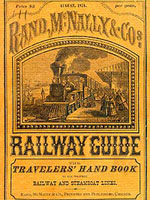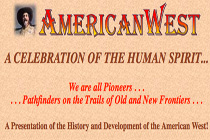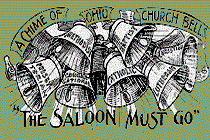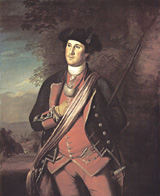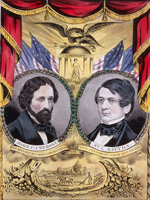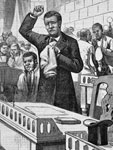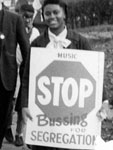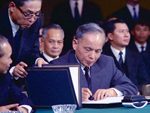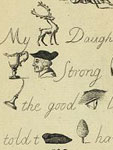In this online exhibition from the Library of Congress you will find three primary source documents—the Declaration of Independence, the U.S. Constitution, and the Bill of Rights—along with more than 350 other related sources including laws, acts, essays, letters, political cartoons, and more. The exhibit displays images of the documents in their original and in interactive forms.
Each of the three major documents appears on the home page. Clicking on a link that begins "Read more about the history of..." takes you to a collection of short (1-2 paragraph) essays on steps in the process of creating the document, with each step accompanied by related primary sources. By clicking on a link that begins “View all items from Creating the...” you are taken to a page where you can view all the available documents related to the major document.
Rather than presenting the documents as works that spontaneously came about, this site can be used to teach and learn about the steps that led to the writing of the documents. For example, if you are interested in documents that were written prior to the U.S. Constitution, you can find more than 50 primary sources related to and predating the U.S. Constitution, including the Articles of Confederation and Thomas Jefferson writing on black education. If you are overwhelmed by the number of sources, you can create a free myLoC account where you can download, save, and store the documents you are interested in.
The best part of the website is that you can interact with the documents, completely dissecting them. (In order to interact fully with the documents you need Microsoft Silverlight, free to download on the site.) Clicking on “Interactives” in the menu at the top of the screen takes you to the interactive documents. Once you choose a document, the screen splits in two; on the left an explanatory text overview appears and on the right the original handwritten primary source. By clicking the “Explore” icon and then "Show Themes" on the right-hand side, you can explore the many themes of the primary source. For example, if you click on "Explore" and "Show Themes," the exhibit highlights parts of the document related to “The Pursuit of Happiness,” "Consent of the Governed," or three other themes. Click on a section marked with "The Pursuit of Happiness" on the Declaration of Independence, and you will see an overview/explanation of the idea on the left. Then you have the option of clicking “Where does this idea come from?” Clicking on that brings up documents that are related to the theme, such as Two Treatises of Government by John Locke, with the related passage in each highlighted.
Clicking on "Explore" also lets you click on "Transcribe." "Transcribe" pops up a window that you can drag over the primary source. The window shows a transcription of the handwritten text beneath it, including any changes the writer made to the document.
Teachers as well as students in grades 6-12 will find this website useful in learning about the history of each of the three major primary sources and about where the ideas in these documents come from.
Teachinghistory.org Teacher Representative Karla Galdamez wrote this Website Review. Learn more about our Teacher Representatives.

